Why do so many people hate US airports?
- Published
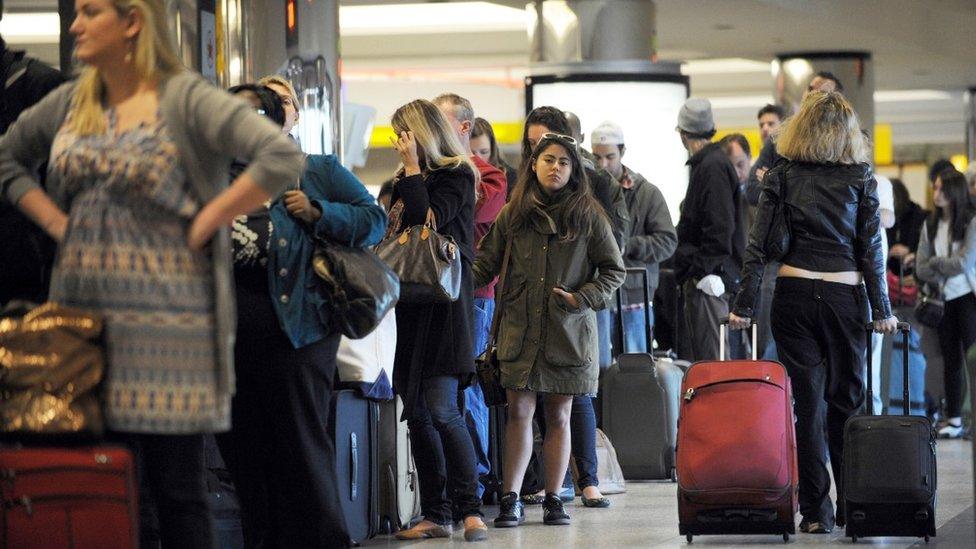
Thanksgiving is one of the busiest travel periods in the US, with millions criss-crossing the country, often by air, to get home for their family dinner - and back again a couple of days later. But air travellers in the US often find the experience frustrating enough to voice bitter complaints. What went wrong?
The Wright Brothers may have given birth to modern aviation on a beach at Kitty Hawk, but US airports these days are far from world-beating.
They are consistently outshone by their Asian rivals in world rankings.
Singapore's Changi Airport, one of the world's busiest, boasts butterfly, orchid and cactus gardens where travellers can while away the time before their flight - for the past three years it has taken the top spot in a survey of 13 million passengers conducted by the Skytrax consultancy group.
South Korea's Incheon, which has an ice-skating rink and a golf-driving range, Hong Kong airport and Tokyo's Haneda also feature in the top five this year. Munich is the only European entry.
The highest-ranked American airport - Cincinnati/Northern Kentucky - is number 30. San Francisco and Atlanta are the only other US airports in the top 50.
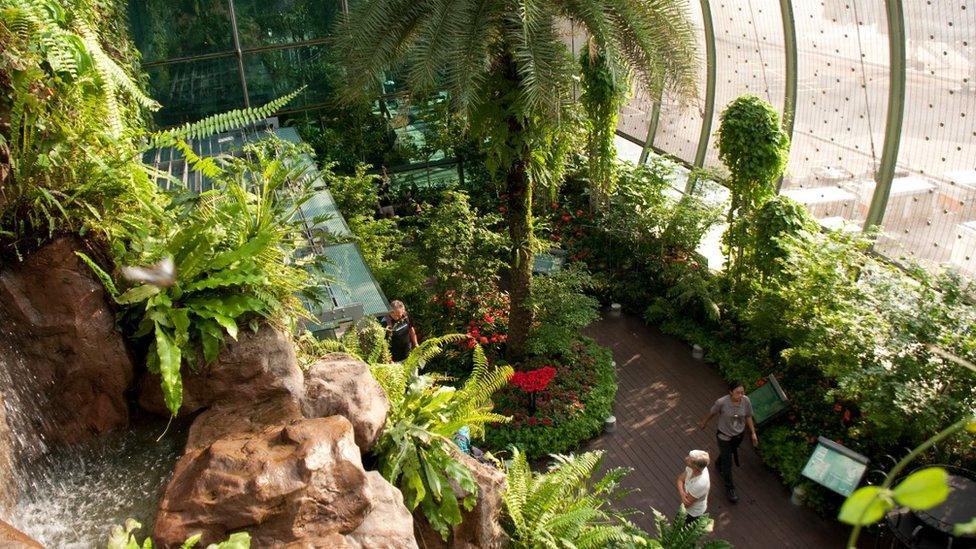
Changi was opened in 1981 - its butterfly garden has a waterfall and about 1,000 butterflies

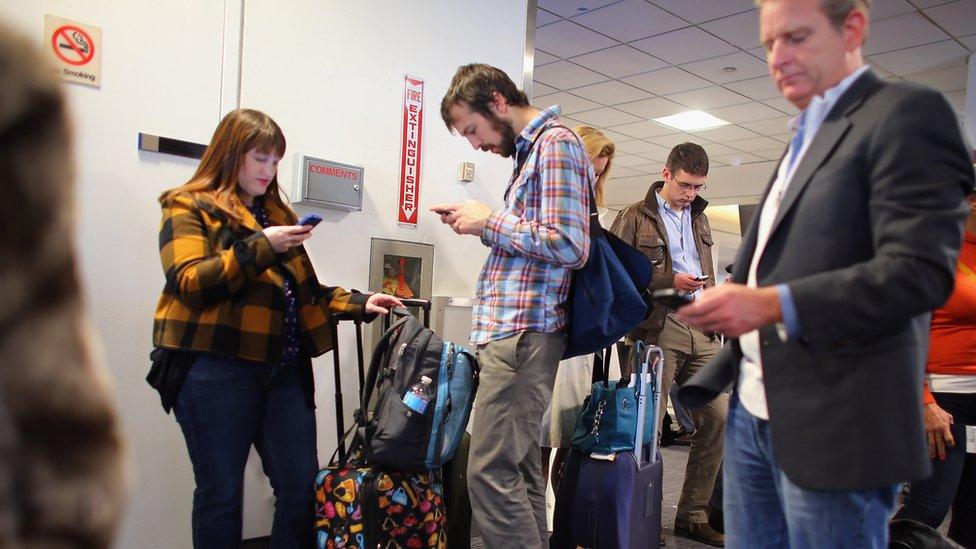
The site of LaGuardia Airport has been used as an airfield since 1929
Exasperated Americans have dedicated entire blogs to a whole array of airport gripes, cataloguing everything from crowded terminals and immigration halls to inefficient transport links and endless security checks.
Brett Snyder, author of the Cranky Flier, says the lack of space at US airports "drives [him] nuts... they were designed for a different era".
Patrick Smith of Ask the Pilot blog, external, says that with scattered exceptions major airports in the US are "incredibly noisy, dirty, and just generally user-unfriendly".
He goes on: "Our security protocols are needlessly tedious, and the connection process for passengers arriving from overseas is horrendously time-consuming. All passengers arriving from other countries are required to clear immigration, re-check their bags, and undergo the Transport Security Administration rigmarole, even if they're merely in transit to a third country."
Sixty-seven percent of people who fly out of America arrive at a better airport, the Economist, external estimated last year, after delving into data on more than a million flights.
Bloomberg, external meanwhile last year launched an annual Airport Frustration Index to record the "most irritating place to catch a plane" in the US and Canada.
New York's frequently-lambasted LaGuardia Airport, which Vice President Joe Biden said "feels like it's in some Third World country", currently holds the top spot. It was first used as an airfield in 1929 and is to be completely overhauled by 2021.
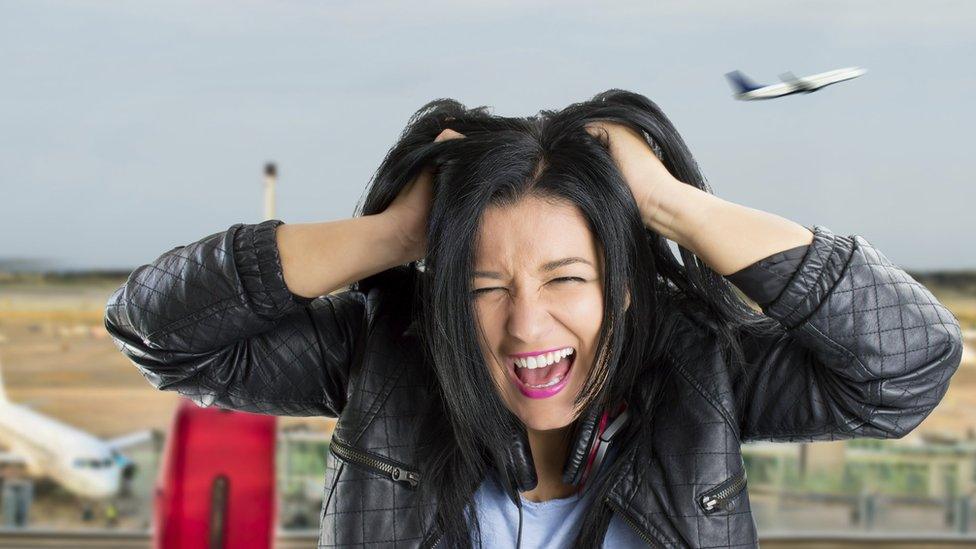
The city's other two main airports - Newark and JFK - also appear in the Frustration Index's top five.
Newark gets a mention in Gizmodo's list, external of the worst airports in 2014 too. It's "dirty, smells bad, has the worst food options, the pay-only wi-fi is actually still horrifically slow", says a contributor called Syngine.
Roughly one in four flights at a NYC airport is delayed, according to Global Gateway Alliance, which is working to improve the region's transport links.
Not that other major airports get off lightly.
"The worst six hours of my life was spent at LAX trying to get to a different terminal," says another Gizmodo contributor, Casoska, referring to Los Angeles International Airport.
Atlanta, the busiest airport in the world, is "huge, confusing and often jam-packed with people", according to Moe Khalel who contributed to a Freakonomics article, external. And Miami is "complete hell", says Ken in the same report - "lines are long (and slow), it is very crowded, immigration is slow, and it has a faint smell of mold everywhere."
Travel consultant Ben Schlappig, who flies about 400,000 miles a year - more than 1,000 miles per day - agrees that JFK is "horrendous" and that LaGuardia's main terminal is "a mess" but also draws attention to Washington Dulles airport, which comes third in Bloomberg's Frustration Index.
It was "built as a temporary facility 40 years ago" he says. "It's essentially trailers and you get ancient moon buggies to immigration."
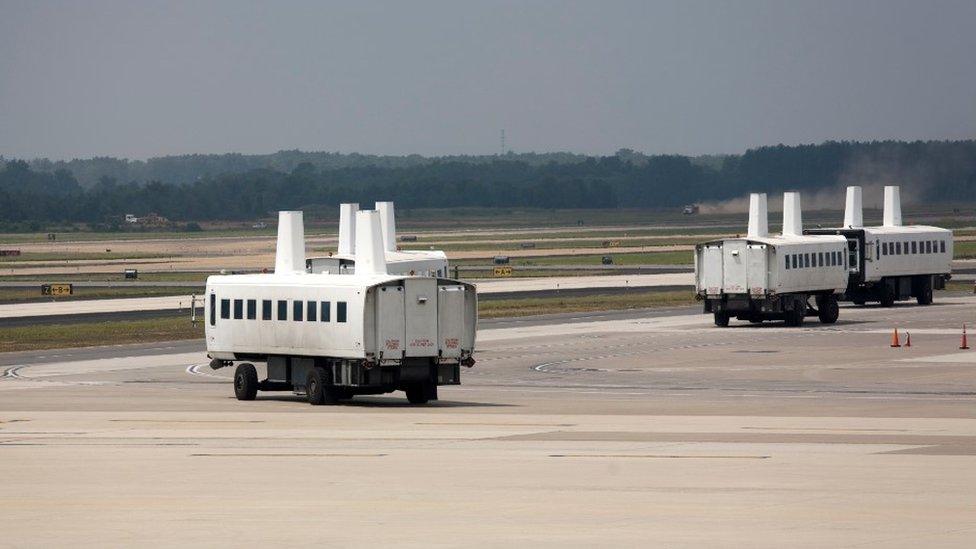
Passengers are transported between terminals in 'buggies' at Washington Dulles
Kevin Burke, the North American President of the Airports Council International (ACI) accepts that US airports have an image problem.
"We are the leaders in aviation and have some of the safest airports in the world, but we've also got some of the oldest, which are expensive to maintain. The average US airport is 40 years old, and when our youngest hub airport, Denver, has just turned 20, you know infrastructure needs to be better," he says.
But Burke says it isn't always easy to give airports a makeover.
Development is predominately managed by cities, regions and local government, and there is a "whole slew of restrictions on how projects can be financed", he says.
One way to improve airports, he argues, would be to raise the federally mandated Passenger Facility Charge which airlines add to fares. This has been capped at $4.50 (£3) since 2001 - but the domestic airline industry is against an increase.
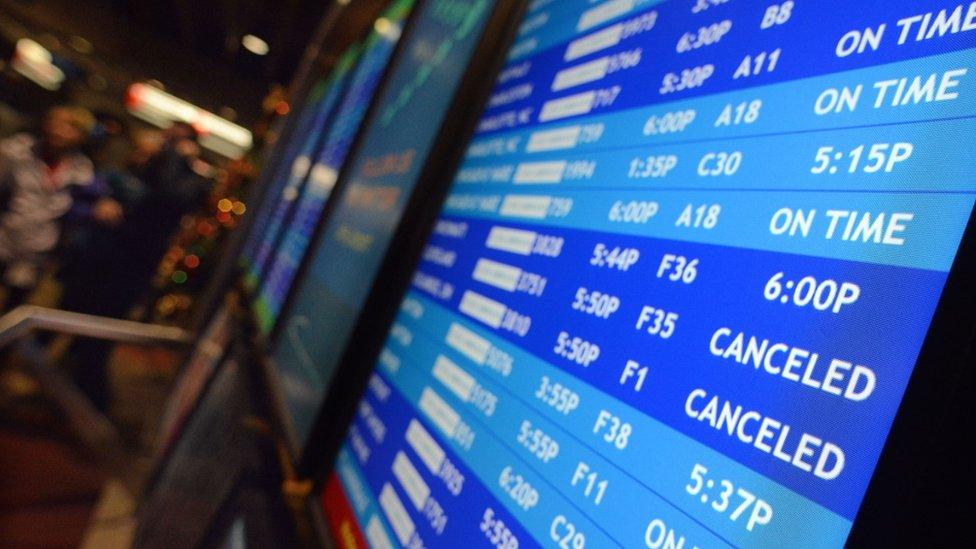
Aviation consultant Mike Boyd also argues some of the criticism of US airports is unfair.
"Most of these Asian terminals are only 15 years old - of course ours are going to look a bit dowdy," he says.
"They might not wow people with artwork, but they were built before security became a big issue, when only 40 people waited at a gate and airlines had their own terminals, and the fact is, they are still able to process people in and out very quickly and do a good job."
It also irritates him that LaGuardia is frequently seen as synonymous with the entire US.
"Yes LaGuardia has its problems. It would be great to build a high speed rail [into New York] but it's prohibitively expensive. But New York is not the centre of the universe. We are making investments in US airports. Airports like those in Detroit and Flint, Michigan match any in the world," he says.

San Francisco was named the best US airport for customer service by Skytrax in 2015
Ben Schlappig recognises that some steps have been taken to make the US travelling experience less painful in recent years. The Transport Security Administration's Pre-Check programme allows pre-approved passengers to pass through security without taking off their shoes and remove liquids from their bags, while the Global Entry enables pre-approved passengers to pass more quickly through immigration.
He's also unmoved by the fancy architecture and glitzy shopping facilities in some European or Asian airports.
"My priority is to get to my destination as quickly and painlessly as possible," he says. "With beautiful airports like Madrid - they might be impressive but it doesn't matter if you have to walk miles to get to immigration."
Geography is one of the factors holding back US airports, Schlappig argues. Places like Dubai, Singapore, Hong Kong and Frankfurt were always likely to become international hubs simply because of their location, and this brings in income, and provides an incentive to invest.
But traffic will rise in the US. The International Air Transport Association projects that 1.4 billion passengers will travel through US airports in 2034 - up from 850 million in 2014.
So the voices of discontent may well get even louder.
Subscribe to the BBC News Magazine's email newsletter to get articles sent to your inbox.
- Published7 January 2015